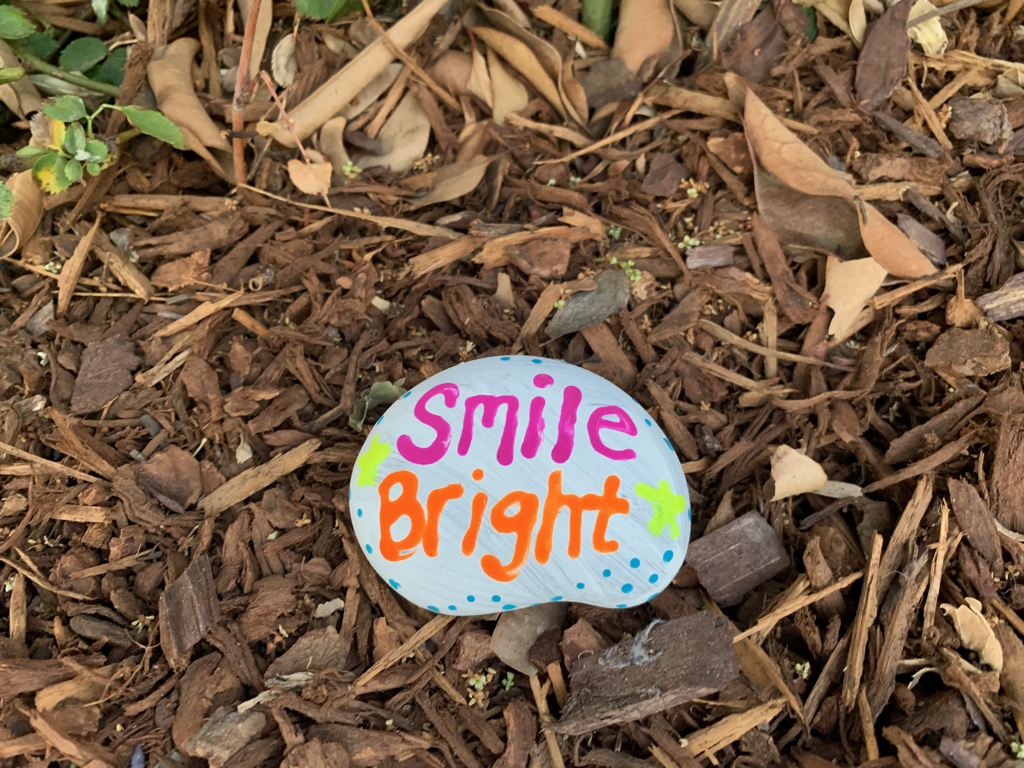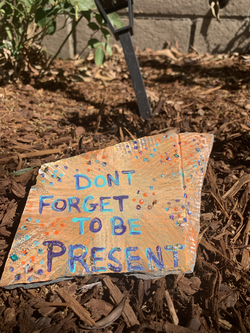Imagine seeing and understanding God simply by looking at the world between your eyes and the horizon line. In that space between are countless opportunities to learn and grow deeper in our understanding of God’s greatest mysteries. I think Paul wanted us to realize that we are a part of God’s creation and we ought to use our lives to reveal God’s truth in us and through us. We are to fill this space with God’s eternal light and love because we are a part of it! We can love God because God loves us, and we are a part of that love. We can love one another because we are all interconnected by God’s love. We are all one with God, nature, and the power that moves between. Paul invites us to see God in all things. And the more I realize I am simply a part of everything ever created, the harder it is for me not to see God in all things - like me, you, and everything in between. God becomes incarnate in the laughter of two children digging a hole and throwing sand at each other. In the birds that swoop overhead and old man asleep on a beach towel. In the tiny waves that barely lap the beach to the even smaller bug that hops around the even smaller grains of sand, God is made known to us. We are without excuse to see and acknowledge God’s mysteries. Richard Rohr makes the argument that this is how Christ is being revealed in the world. “Christ is another name for all things.” Christ is the universal connection that ties us all together. If Rohr is correct, then we ought to be able to see Christ inside us as well as right in front of us, right here and right now in whatever space you find yourself in. Why is this important? Does God need our recognition to survive? Or do we need to recognize God to survive? Maybe it’s not so dramatic as that. Perhaps it’s simply a way to see God so that we come to understand our place in the divine cosmic relationship with God and the entire cosmos. Or maybe it’s more simple. Maybe it’s in our understanding of this that we understand how to be who we were made to be. Henri Nouwen makes this case:
We learn about the nature of God by looking at the natural world God made. But the natural world also teaches us about who we are in relationship with God, and the steadfast love of God that moves through and all around us in Christ. All nature conceals its great secrets and cannot reveal its hidden wisdom and profound beauty if we do not listen carefully and patiently. John Henry Newman sees nature as a veil through which an invisible world is intimated. He writes: “The visible world is… the veil of the world invisible…so that all that exists or happens visibly, conceals and yet suggests, and above all subserves, a system of persons, facts, and events beyond itself.” How differently we would live if we were constantly aware of this veil, how nature is ever ready for us to hear and see the great story of the Creator’s love, to which it points? Again, Nouwen posits, “The plants and animals with whom we live teach us about birth, growth, maturation, and death, about the need for gentle care, and especially about the importance of patience and hope. . .” It might be wise for us to allow “nature to minister to us.” St. Francis of Assisi often preached to tress and animals, but he also sat in nature to hear a sermon from the birds in the air and the bugs on the ground. “We could do an immense service to our world if we would let nature heal, counsel, and teach again,” states Nouwen.
Work Cited:
Nouwen, Henri J.M. (2017) "You are the Beloved." The Henri Nouwen Legacy Trust: Convergent Books. Mclaren, B. D., Rohr, R. (2019). The Universal Christ: How a Forgotten Reality Can Change Everything We See, Hope For, and Believe. United States: Crown Publishing Group.
0 Comments
Leave a Reply. |
Ian MacdonaldAn ex-copywriter turned punk rock pastor and peacemaker who dedicates his life to making the world a better place for all humanity. "that they all might be one" ~John 17:21“Prius vita quam doctrina.”
~ St. Thomas Aquinas (1225–1274) * “Life is more important than doctrine.”
Archives
June 2024
|

